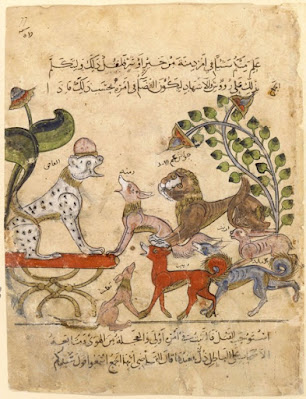It mirrors "The Mouse Turned into a Maid." This original is found in the Panchatantra, a collection of Indian fables from. about 200 BCE. The story goes...
...a mouse drops from the beak of a bird of prey into the hands of a holy man, who turns it into a girl and brings her up as his own. Eventually he seeks a powerful marriage for her but discovers at each application that there is one more powerful: thus the cloud can cover the sun, the wind blows the clouds about but is resisted by the mountain; the mountain, however, is penetrated by mice. Since the girl feels the call of like to like in this case, she is changed back to her original form and goes to live with her husband in his hole. [link]
A Romanian folk variant shows a rat setting out to pay a visit to God, but gets thrown through the same succession of sun and clouds and wind which finally dumps him on an ant heap, where he "belongs."
That the mouse or rat has aspirations but cannot rise above its birth station (even if it is magicked into a human being) makes a strong case for nature over nurture. Although many think of this debate as a modern one, prompted by Darwin's theory of evolution, it was a question raised long before. Next I'll talk about the Nature vs. Nurture debate in the Middle Ages.

